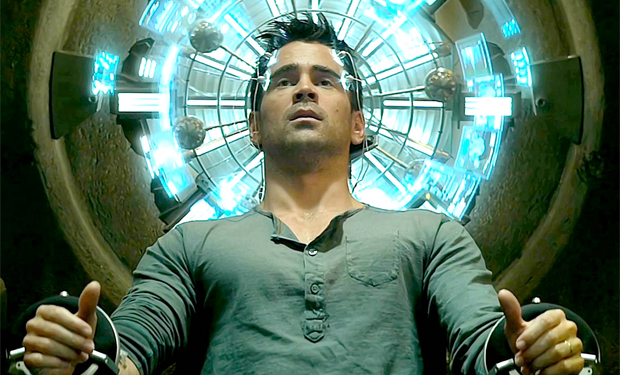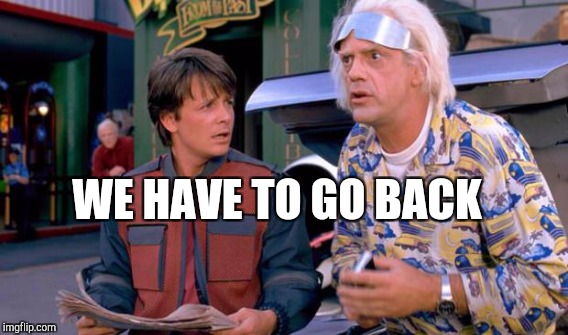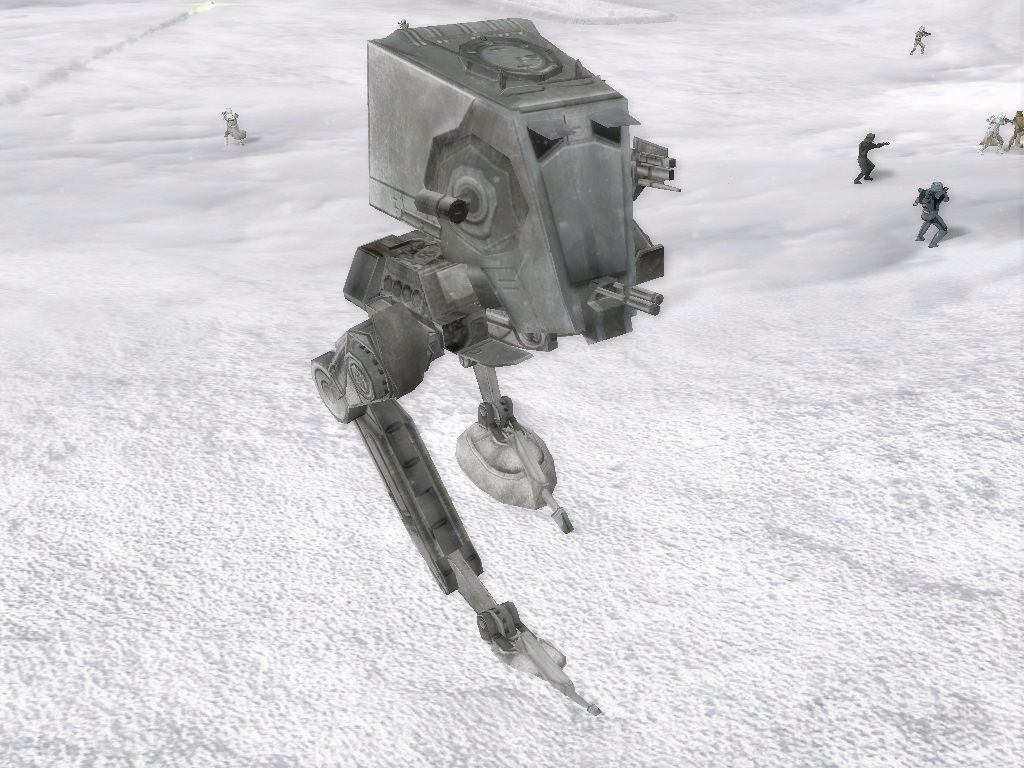Help! UX fanbase ruining game industry!
Popularity of UX(not UI/UX) in game industry affecting game designers way of thinking, more and more of them tries to apply popular UX practicies from around the web, no research, no analytics, no psychology. This leads to unforseen negative results!

Instead of intro
UX affecting game industry, in fact, it's ruining it, but not in a way that you might think there is both positive and negative ways how UX affects game industry, and negative side of UX is exactly what I decided to share my thoughts about.
.jpg/?width=700&auto=webp&quality=80&disable=upscale)
I need you to avoid this common trap of misusing tools at your disposal, one of which is UX!
--- *disclaimer* ---
Here and further UX that I'm referring is, not pure UI/UX that is main part of product development now, but rather, Game UX and not even proper Game UX with researches and focus groups, analytics and study. I'm talking about trendy UX that are appearing in game development process. Problem that I want to explain here is how UX partially bleeding into game design process and affecting way of thinking of game designers in a wrong way because of lack of proper application of one. Check references for more details and specific information.
--- *end of disclaimer* ---
What is UX?
As Celia Hodent explains in her article(Link):
"UX explores how it is like for the target audience (the players) to experience your game (and everything beyond, such as downloading the game, consulting forums, etc.). It uses neuroscience and psychology knowledge and applies game user research methodologies (e.g. playtests and analytics) to make sure that the game has good usability and is immersive (although I prefer to refer to it as gameflow)."
This is how UX looks from inside, but UX from outside? What is UX from perspective of developer who only started or never worked with UX and familiar with it only from GDC talks and popular web articles?

A new hope?
UX in mass media and articles often presented as magical silver bullet, they never explicitly say it but it feels like 10 rules to follow for guaranteed success. There is even some people that naively believe that if they will take any mediocre game, apply everything that they find over internet about UX, that will lead to 100% success. It can make it better for sure, polishing is always a good thing, but it wont make game/feature automatically better if you look through it from perspective of UX. Huge success of some projects that used dedicated UX designers was not only because of prominent use of UX but as well because of use of UX. My personal opinion that UX without a credible UX Agent(professional from that field)...

Is it a trap?
So called Game design UX without proper implementation and professional psychologist leading it, just a trap a false promise. Articles like "Top 10 UX tips" or "How UX changed my life" from around the web wont make you a UX professional to claim that approach A is better than approach B. Psychological education, years and years of conducting user tests and having results and trends memorized, understood and becoming your second nature will give you some credit to make such claims, otherwise it's just a reference to known practice and nothing more.
Misusing trendy UX practices in fields that were not directly intended for UX to be solved, destroy depth and unique experiences that player could have. And in big games with huge scope that missing experience could be one that certain audience are looking for. It happens because people tend to use models that worked once for certain things to other things that, expecting that it will make everything just better.
Goal of UX to make experience intuitive, fluent, simple and straightforward, ideal game from UX point of view is a big button with a huge red flashing text “WIN THIS GAME”. The truth is that UX is...

Just a tool, and a sharp one
But overall and like many other things in game industry, UX is a tool and like many other tools it can be misused and have negative impact on whole game and development process. And I think we need to have more articles that explain what UX isn't in game design, I will have hard time to describe it more accurate compared to what a great job Raph Koster already did on his own website(Link):
"UX is about clarity that hides complexity, and game design is about clarity that teaches complexity."
And slightly expanding on his findings of what UX do to products and how it's bad for game design:
transparent, so that the user needs to think as little as possible - Evil whisper : and not having any experience of that events memorized and use in future
affordant, so that the user knows what possibilities it offers - Evil whisper : and have no thrill of discovering new abilities and things
scalable, so that it unfolds as the user develops skills - Evil whisper : this rule followed precisely will make experience not challenging, linear and dull
feedback-rich, so that the user knows when they did something - Evil whisper : and loose a chance of feeling the magic behind, not having any space for fantasy
constraining, so that the user can’t do things that get them in trouble - Evil whisper : yeah, ok I gave up this one is quite good
 Don't get cut
Don't get cut

When UX starting to bleed deep into game design, it starting to change how game designers perceive mechanics in game, they start to streamline everything that they think can stand between player and that one goal that designer(not player) has in mind.
It's like if UX is a grinding stone tool and game is a knife, you can use this grinding stone to sharpen knife edges, remove roughness and make it spark on the sun, or you can make into very dull knife that have no edges, smooth and safe to grab from any side, but such knife will never be able to cut bread. Best counter example is Dark souls series, very edgy game :)
But if game will be sharp on all sides handle will be covered in spikes it will be very repulsive for new gamers, or at least gamers without tough skin.
Often overusing UX approach in game design and making it "flowy" too much leads to very weak conscious connection between player and game(except mediative games, they are cool), there simply not much of a psychological connection, and as result quite soft and unclear memories of what just happened there in that game? Where I was? Oh yes, article...
Let's take a step back for a moment
From perspective of player motivation, experience flow and new memories generation, what exactly UX is responsible for, I would say, and I hope we can agree on this, that UX is all about moment-to-moment experience, but game design or rather game overall should strive not only for fluent "NOW" but also have something to give player solid "THEN", any good game has to generate some pleasant memories that one can revisit, or interesting that one can share, or in ideal scenario both of it.
 Pedal to the me..memory loss
Pedal to the me..memory loss

Need for speed Undercover have a perfect game loop from a perspective of any UX designer, you can skip all cinematics and after race is over with press of one button jump to next race, no details, no context no requirements straight to a starting line, simply skipping everything and just hoping from race to race you can finish whole game(I actually personally liked that part of the game, it's my favorite and best for "meditative gaming" when I want to clear my thoughts). Since you can skip almost everything except racing itself, it should be a good thing right?
Well, from UX designer perspective yes, from a game designer perspective, not really. Player won't have any memories after playing a game, nothing to share if everything that you will need is just driving skills. NFS Undercover is streamlined to the point of automation and reflexes if you are a moderate racing gamer you will have nothing to remember about this game, it will be pleasant to play for sure, but nothing to carry with you after.

Memory vs. Experience
There is a big difference between experience vs. memory of an experience and it is described much better than I can by Daniel Kahneman in his TED talk "The riddle of experience vs. memory"(Link).
In one of examples of his researches there is a story about guy who were listening to music(and enjoying it) that had a horrible drop in the end that ruined his whole experience, but wait, no actually not, experience was pleasant it is memory of this whole experience loop was ruined, and actually latest models that describe how our brain and memory works explain that quite simply, as I described in my previous article: "Player motivation, part 1: Biological foundation of emotions"(Link) to record an experience as memory brain use certain neurotransmitters and to read this memory again brain sends a request to produce this neurotransmitter that affects our emotions and current state(this is horrible over-simplification and I should feel bad about it, just read article it would be easier for both of us).
More simply:
Memory of experience = (current chemical pattern this moment) + (chemical pattern of next moment) + ... and so on and to read this sequence brain will have to reproduce partially same chemical pattern making us to "relive" that experience again, but brain has no concept of time so he will send a request to produce it for whole sequence, including that bad moment.
Even more simply:
One bad thing happened to us by the end of the day will ruin our memories of that day, for sure.
Our past memories is a resource, resource that we accumulate and use to revisit, share with others, use as shaping materials for creative work, affecting our views and personality and many other needs. And perfect UX usually generate zero points of such resource making this moment to moment experience useless in a long term.

Let's get back on track and talk Game design
Game designer should always treat any mechanic in game not only from perspective of "NOW" but also from perspective "THEN", how valuable this bit in terms of generating interesting memories.
One of the reason why Battle Royale games like Apex Legends become such viral because each session have a lot of opportunities for small unique micro-narratives that worth sharing and due to highly repetitiveness and short main loops chances of creating strong memories are much higher. Memories that are interesting enough to give us joy simply revisiting them and especially sharing with others. Also Faster than light working on same premise but it’s not trending right now so...
But on the other end of a spectrum in single story games such as Half-life 2 you basically have one shot to give player unique experience of something that is worth sharing with others. And this is why it's important to have branching pathways, additional mechanics and high variability (story, characters, enemies, weapons, mechanics etc.)
And within the game itself streamlining and simplifying certain game loops(that not even directly requiring this) could significantly limit chances for that unique micro stories that player could have experience during gameplay.
In short: ongoing experience if it's streamlined and have no memorable elements will leave 0 impact on player life after that experience is over.
First victim of overusing/misusing UX approach in game design mechanics is depth of this mechanics and possibility spaces.

Possibility spaces and butterfly effect
As we more and more going further into cemetery of victims of misused UX, it's hard not to mention possibility spaces. That big and broad in time game loops that not important on their own but could potentially generate a lot of unique and interesting experience.
Our wheel are busted we need to find a replacement and fast!
Some time ago I was playing DayZ Origins mod based on DayZ mod(modception!), and I have a particular story that happened to me:
Me and my clan mate are riding a truck loaded with loot from Topolka to Molotovsk on a half empty server(better not to risk when you move so much loot, eh), and some unfortunate accident(and junky server) resulted in busted wheel, driver saying: "Our wheel are busted we need to find a replacement and fast!, let's check nearest city, I hope there will be no enemy clan mates lurking around"...

An hour after this small city became a guerilla warfare battleground that resulted into helicopters "dog-fight" above city so winner will be able to land and pickup wounded clan mates. Two hours after we were on a revenge mission to get back our truck from enemy clan base resulting in even more movie like drama.
All this could not happened if vehicles in that game wont have destructible(and replaceable wheels), cut of this feature will result in small missing bit on paper but a huge possibility space carved out and hours and hours of unique experience between players.
Regress: Star Wars battlefront old vs. new
In old Star Wars Battlefront to get hands on AT-ST walker you have, find one and get into it, in new SW Battlefront you just need to pick up glowing token on the battlefield, UX wise a perfect decision, player is more often reminded about availability of tech in the game and right after this he can immediately jump into action as pilot. Brilliant!
Back in good old days it was it’s own experience loop: going to hangar or base, find vacant AT-ST or even stealing one right from battlefield if pilot decided to take a stroll, a huge possibility space for different and interesting micro-stories to occur, maybe enemy sniper is keeping eye on your hangar or that particular AT-ST and you will get killed, and after this you will forget about AT-ST and will be on path of revenge to find that nasty sniper!

UX way of thinking behind this decision is quite clear, someone thought to himself, well if player want to have an experience of being an AT-ST pilot and there is too many of them, and some even waiting on spawn to get one, why we would not just give him ability to jump in, at a random moments and eliminate long and “boring” way to hangar and also have a more equal distribution of chances to get one. But it also ruined other parts of the game that were there supporting fantasy of battlefield and realism(shouldn't brought that considering Star Wars universe but anyway...)
Progress: Power armor Fallout 3 vs. Power armor Fallout 4
Bethesda, did some interesting improvement over certain game mechanic that can be brought here as example of right progress.
Power armor in Fallout 3 was just that, an armor just like in Skyrim or any other armor in action RPG game, stat bonus, resistances etc. UX wise a streamlined, simple approach, you get it and use it. What happens next? Nothing really, weak fantasy support, no additional gameplay loops, simply dead loot that player will find once will get it equip and forget.

Power armor in Fallout 4 UX wise is a nightmare, you have to craft it by yourself(hello psychological, Ikea effect!), you can use it only with fusion cores. But honestly it’s an endless space of unique and memorable experiences, gameplay loops and story bits that player could have during all this parts of the loop(crafting, upgrading, maintaining), it give some intrinsic goals to achieve and a big reward in the end (power armor in F4 much more powerful compared to F3). Power armor in F4 is a source of stories, guides, top 10’s on YouTube and reddit topics, and again game design wise, on paper, change was not that big: “Yeah and also what about power armor? Just make it more powerful with it's own HUD and animation, oh and also make it use consumable batteries, and player have to craft it and repair to use! A nightmare for a UX design fanbase!
UX vs depth and busy work
Usually intentions and goal of using broad UX practices in game design is often to remove or smooth out edges that not part of an intended experience. Problem arise in big projects when there is so many options and variety of activities in game that game designer simply can't be sure what exactly player want to experience in this game.
Big complex multifaceted games like Red Dead Redemption 2 or World of Warcraft have many different systems and mechanics. Some people want to enjoy story, some want to become really good at one or set of particular mechanics. Even in cases, when goal is clearly defined by designers player will always find their own long and short term targets in game:
Beating certain boss
Reaching certain level without using weapon
Completing all quests in area in shortest possible time
Beating game using only knifes
Role play as taxi driver
Create most famous clan
Become most richest trader
Create a perfect gif for a meme
and so on...

And designer can’t foresee all player’s demands, and as result can’t correctly “solve” UX problem of optimizing game experience(especially without all this play tests and analytics), and could easy by accident cut something, that were creating a positive possibility space.
As Creative director of For Honor explained in his GDC talk “Engines of Play: How Player Motivation Changes Over Time”(Link) player motivation and goals tend to shift and change with time and it’s hard to keep track or control this process and especially foresee what it will be, it can be only estimated broadly. This is why I want to talk about houseplants.
UX and houseplants

If we try to apply core rules and UX techniques onto our daily lives we can find many anomalies, for example taking care of houseplants, from perspective of UX it’s just busy-work, it takes effort, dedication resources and outcome is very vague and still there is many people who have houseplants and really enjoy caring about them. It's a very simple management task that human beings bestow upon themselves, sometimes, exactly for such reason, to practice management skills, and some plants I would say require a lot of effort and dedication, there is people in the world who find such activity fun, can you imagine?!
Often when management looks like unnecessary busy-work from perspective of game design and especially UX, don't rush to cut it, maybe it’s a houseplant thing? If it is not blocking any important core loops and support fantasy or just satisfying or even a tool for players to dig deeper into certain mechanics to go beyond what was intended, give it a second thought.
 For example, oddly satisfying management in a cell based inventory recently appeared in Deus Ex Mankind divided and Prey 2015, UX wise this is completely unnecessary, it's not making story any better, it's not supporting any core ideas or mechanics of the game and so on, and yet it's deeply satisfying and many people finding this inventory system very pleasant to use, so much, that there is a single game purely based only on this mechanics, simply called "Inventory" by Dan Harris. (Link)
For example, oddly satisfying management in a cell based inventory recently appeared in Deus Ex Mankind divided and Prey 2015, UX wise this is completely unnecessary, it's not making story any better, it's not supporting any core ideas or mechanics of the game and so on, and yet it's deeply satisfying and many people finding this inventory system very pleasant to use, so much, that there is a single game purely based only on this mechanics, simply called "Inventory" by Dan Harris. (Link)
Conclusion time
Let’s leave UX to professionals and work on Gamer Experience. Where game design oversees mechanics and rules of the game and UX design trying to make everything smooth, GX has to care about possibility spaces, unique memories, depth and busy work and all mechanics that support all of this.
Summary:
Good UX used correctly, exploring how it is like for target audience to experience your game, and how make this experience better.
UX is just a tool for specific tasks, but because of it's popularity, being misused
Making game too "flowy" can result in dull and empty experience with no footprint in memories
Moment to moment experience and memory about that experience is a huge difference that often not taken in account
One of the ways to give player ability to get unique interesting memories is to keep and not cut features or small mechanics that create possibility spaces
It's really hard to apply UX correctly in game design because it's often unclear what exactly player will want in this particular moment
Depth and busy work not that useless as it looks from one side, other people can find it quite enjoyable, if it helps fantasy or create possibility spaces or simply satisfying, give it second thought
References
Celia Hodent: 5_Misconceptions_about_UX_User_Experience_in_Video_Games
Raph Koster: Game design vs UX design
Daniel Kahneman: The riddle of experience vs. memory
Andrii Honcharuk: Player motivation, part 1: Biological foundation of emotions
Jason VandenBerghe: Engines of Play: How Player Motivation Changes Over Time
Dan Harris: Inventory
Read more about:
BlogsAbout the Author(s)
You May Also Like













